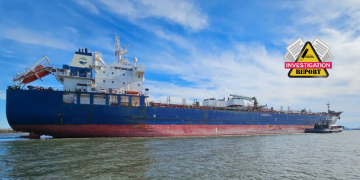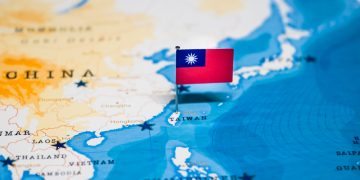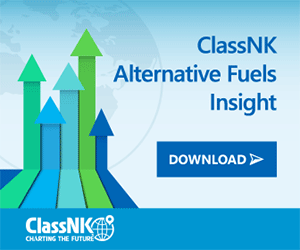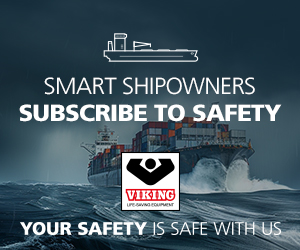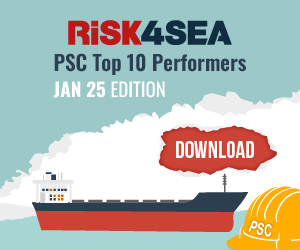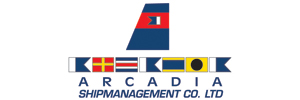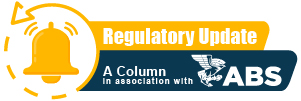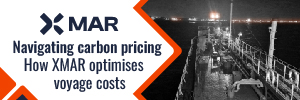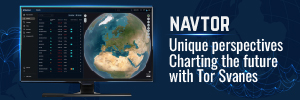In an exclusive interview with European Maritime Space (EMS), Gesine Meissner, the European Coordinator for EMS under the revised Trans-European Transport Network (TEN-T) Regulation, outlines key priorities, emphasizing the focus on short sea shipping to reduce congestion and emissions while ensuring robust trade flows.
EMS supports the development of green corridors not only through funding but also by promoting smart port-side measures as incentives. For example, ships using low- or zero-carbon fuels may benefit from reduced port charges or faster turnaround times. Additionally, Meissner highlights that the forthcoming EMS work plan—currently in development—will emphasize digital solutions aimed at making short sea shipping more user-friendly and ultimately a more attractive alternative to road transport.
SAFETY4SEA: Tell us a few words about the European Maritime Space (EMS). What are the top priorities on the agenda?
Gesine Meissner: A key EMS priority is strengthening ports, as they serve as strategic gateways for Europe’s internal market and for global maritime trade. For instance, we support better port infrastructure—particularly for alternative fuels—alongside improved financing instruments under the Connecting Europe Facility (CEF). Another important area is the synergy between commercial maritime operations and military mobility: by enhancing dual-use infrastructure, we help ensure strategic readiness as well as economic competitiveness. Our agenda also includes advancing technology for navigability and resilience, such as digital traffic management systems, while pushing for sustainable energy solutions in ports and in ships. Ultimately, the EMS fosters a greener, more cohesive maritime landscape across the EU. Finally, in my role as the European Coordinator for the EMS, I personally want to contribute to the exchange of knowledge and best practices, both within the maritime sector and between the relevant departments of the European Commission. To support this, we organise workshops and forums and have launched a newsletter to keep stakeholders informed and provide a platform to present new initiatives and projects. We encourage everyone to keep up to date by subscribing to the EMS Newsletters, where details of projects, upcoming funding opportunities and wider EMS developments are readily available.
At a glance
The European Maritime Space (EMS) is essentially the maritime dimension of the Trans-European Transport Network (TEN-T), wish aims to make EU transport more sustainable, smarter, better-connected, and resilient. EMS focuses on short sea shipping and a better integration of ports with the landside network, so that goods and people can be transported by sea in a sustainable way, and enhancing cargo logistics to seamlessly link with rail and inland water transport. This helps reduce congestion and lower emissions while still facilitating robust trade flows. Additionally, the EMS paves the way for digital solutions that keep freight moving smoothly—whether that be via efficient logistics systems, data exchange platforms, or real-time tracking mechanisms.
S4S: What are the challenges of maritime transport from your perspective? How does EMS contribute to the overall sustainability and efficiency of the EU transport network?
G.M.: Maritime transport is currently facing pressing challenges. On the environmental side, ports need to decarbonise while managing local impacts, and shipping lines are switching to low- or zero-emission fuels. However, building new bunkering infrastructure and retrofitting older vessels requires significant investment, and no single fuel has yet emerged as a clear frontrunner. In parallel, strengthening digital and physical connectivity is critical: consistent data standards, robust hinterland connections and effective cybersecurity measures all contribute to a resilient network. At the same time, wider economic difficulties make dedicated funding–such as from CEF–more important than ever. The EMS addresses these issues through a well-rounded policy framework. By promoting short sea shipping and green corridors, it helps to reduce both road congestion and carbon emissions. In addition, the integration of maritime routes with rail and inland waterways paves the way for a more comprehensive, multimodal TEN-T Network. Under the revised TEN-T Regulation (EU) 2024/1679, the focus on digital solutions – such as seamless port operations and the implementation of EMSWe – aims to remove bottlenecks caused by outdated procedures. Ultimately, the EMS goes beyond connecting ports: it aims to strengthen the efficiency and competitiveness of the entire (maritime) transport sector and the supply chain.
S4S: What are the top priorities for upgrading hinterland connections to maritime ports?
G.M.: Strengthening hinterland connections is essential to making ports the true starting (and ending) points of European Transport Corridors. Firstly, we need seamless rail connections: over-reliance on road transport crowds both highways and cities, so an expanded, modernised rail network—especially in cross-border sections—is a priority. Better inland waterway links are also vital, especially for regions where rivers or canals can ease the shift of freight away from roads, reducing both emissions and transport bottlenecks. Targeted digital solutions also deserve attention. Harmonised data platforms and interoperable systems allow port operators, customs and transport companies to coordinate arrivals and departures more precisely, reducing both delays and costs. Of course, none of these improvements come for free. The Connecting Europe Facility (CEF) has already proved invaluable in funding them, and as we move towards the next Multiannual Financial Framework (MFF), it remains essential that stakeholders take part in the ongoing consultations. By doing so, we can help keep the CEF and other proven funding instruments robust enough to support the continued modernisation of rail, inland waterway and digital infrastructure.
S4S: How does EMS promote the role of ports as energy hubs and support the integration of renewable energy, such as offshore wind?
G.M.: Ports are increasingly becoming hubs for low-carbon energy activities, from offshore wind assembly sites to hydrogen refuelling stations. As Europe accelerates its transition to clean energy, the maritime sector has a key role to play – after all, a truly green transition can only succeed with a strong blue economy. As I often say, there is no Green Deal without a Blue Deal. Several Commission programmes directly or indirectly support ports in their role as energy hubs. This support ranges from innovative/research pilots funded by Horizon Europe to scale-up efforts and deployment through the Innovation Fund and CEF, creating synergy and accelerating the scale of implementation. Support is available for the production of biofuels, synthetic renewable fuels for shipping, green hydrogen production plants, RES – Renewable Energy Sources (e.g. wind, solar), integration into energy grids and evacuation of captured CO2 from industry for permanent geological storage, etc. Through the EMS, we promote the development of port infrastructure to support these alternative energy needs. Such investments in seaports are a priority for funding under the current CEF programme.
S4S: How does EMS ensure year-round navigability for maritime transport, particularly in regions with harsh weather conditions?
G.M.: Year-round navigability is vital not only for northern countries, whose ports face prolonged ice conditions during harsh winters, but also for Europe’s supply chains. Through EMS-related CEF calls, we support the development of ice-breaking capacity, such as the acquisition or upgrading of high-capacity ice-breaking vessels and other related ice-breaking facilities. For example, the CEF is funding the WINMOSIII project with a grant of €30 million to upgrade the joint ice-breaking fleet of Sweden, Finland and Estonia with an A-class icebreaker. Such investments are essential to ensure access to European ports in the Baltic Sea in all weather conditions and to ensure the safety of maritime navigation in winter. This will ensure that supply chains remain operational and that EU waters are navigable for ships throughout the year. The CEF also supports state-of-the-art digital tools such as real-time weather monitoring and traffic management systems, as well as infrastructure improvements – from breakwaters to reinforced quay walls – that reduce the impact of storms. Taken together, these measures strengthen Europe’s competitiveness and keep goods moving, even during severe winter seasons.
S4S: What policies or initiatives are in place to reduce emissions and congestion caused by road transport through short-sea shipping?
G.M.: Short sea shipping plays a key role in reducing road congestion and emissions. The revised TEN-T Regulation recognises maritime transport routes as fully integrated elements of the EU transport network, with the EMS as the maritime extension of the landside corridors. The EU is also encouraging operators to use cleaner propulsion systems, supported by the Alternative Fuels Infrastructure Regulation and various funding programmes. Additionally, investments in port facilities and multimodal freight terminals help build a more robust transport system. By fostering closer links between sea routes, rail, and inland waterways, we can shift a greater share of freight off the roads, easing pressure on highways while boosting overall transport efficiency and sustainability. Through the EMS, we are also supporting the creation of ‘green corridors’, not only through funding, but also by promoting smart port-side measures such as incentives. Ships using low or zero carbon fuels can benefit from reduced port charges or faster turnaround times. In addition, the forthcoming EMS work plan, currently under development, will place an emphasis on digital solutions to help making short sea shipping more user-friendly and ultimately more attractive than relying solely on road transport.
S4S: How do you foster effective collaboration among diverse stakeholders?
G.M.: Cooperation is at the heart of the EMS and is very important to me. Under the new regulation, we have a structured governance mechanism that brings together port authorities, shipping lines, local communities, national ministries and other relevant stakeholders. Through these EMS Forums and additional targeted working groups, we bring different viewpoints to the table – whether from technical experts, industry representatives, authorities or NGOs – so that they can exchange views freely and constructively. In addition to these meetings, I make it a priority to visit ports on a regular basis. Hearing first-hand about their challenges and successes helps shape a practical understanding of what’s needed. During these visits, I also meet with ministries and shipping associations or other key stakeholders to ensure a holistic view of both regulatory and operational perspectives. Finally, we keep the lines of communication open. Our dedicated EMS newsletter provides regular updates and invites feedback, making it easier for stakeholders to stay informed and contribute new ideas whenever possible. This approach ensures that everyone has a voice in building a more robust, efficient and sustainable maritime transport sector.
S4S: If you could change one thing across the industry from your perspective, what would it be and why?
G.M.: If I could make one transformative change, it would be to ensure a stable and predictable public and private investment strategies. Right now, too many promising initiatives are stalled because of fragmented national budgets or funding uncertainty. Strengthening our instruments under the new multiannual financial framework would give ports, shipowners and technology developers more confidence to invest in sustainable, high-impact solutions. This, in turn, would boost short sea shipping, speed up digitalisation and ease the implementation of longterm resilience measures. It’s also worth noting that the upcoming industrial maritime strategy, which aims to enhance the sector’s competitiveness and resilience, will be crucial in supporting the industry’s transition. In practical terms, this means expanding successful programmes like CEF through continued funding under the Multiannual Financial Framework (MFF) and emphasising investment needs in upcoming initiatives, such as the upcoming white paper on the future of European defence, the comprehensive EU Port Strategy or the Sustainable Transport Investment Plan. Of course, public funding can only go so far, so it’s just as important that the sector itself attracts more private capital. Ultimately, sustainable long-term commitments send a strong signal to companies, encouraging them to take risks on new technologies – exactly what we need to meet Europe’s climate goals while remaining globally competitive.
S4S: What is your key message to industry stakeholders toward a more sustainable maritime transport?
G.M.: Maritime transport is central to Europe’s prosperity, carrying much of our trade and supporting countless jobs across the continent. At the same time, it offers huge opportunities for greener growth – whether through new fuels, improved port infrastructure or digital tools that reduce both congestion and emissions. My main advice is simple: keep maritime transport at the top of the EU agenda and work together towards common goals. Ports, shipping companies and the entire supply chain should highlight their realities and achievements – especially where cooperation is essential, such as the implementation of shore-side power or the introduction of new propulsion systems. If policymakers and the public truly understand the importance of shipping and ports, we can unite behind practical solutions that drive sustainability and economic growth together. Maritime success is essential for Europe as a whole.
Do you know?
As announced by President von der Leyen, the Commission intends to put forward a comprehensive European Port Strategy. This strategy has important synergies with the EMS, and will cover a wide range relevant to ports, from competitiveness, to sustainability, to energy transition, to resilience, to innovation and several others.
The views presented are only those of the authors and do not necessarily reflect those of SAFETY4SEA and are for information sharing and discussion purposes only.








